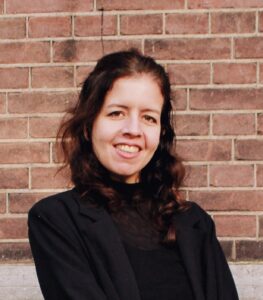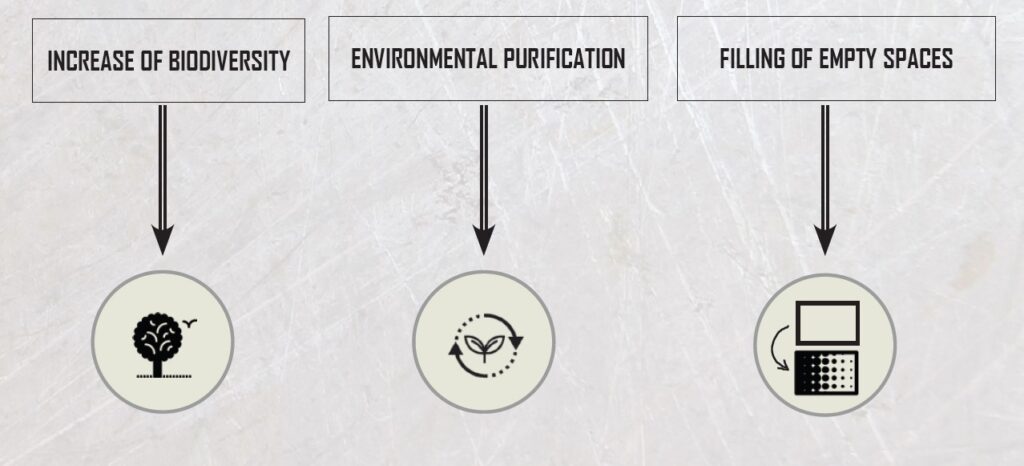
RECLAIMING PORT WASTESCAPES: INTEGRATING URBAN GREEN INFRASTRUCTURE FOR SUSTAINABLE RENEWAL
by Francesca Mazza – 30.09.24

by Francesca Mazza – 30.09.24
Discover the rapid growth of port Wastescapes since the 1900s. Learn how reclaiming these spaces can turn urban and suburban areas into vibrant Eco-social hubs, driving sustainable development forward. The text provides a compelling introduction to the complex and evolving story of port wastescapes and their potential to become part of urban green infrastructure (UGI) in sustainable urban renewal.

FRANCESCA MAZZA – Landscape architect
Francesca Mazza is a landscape architect dedicated to creating environmentally sustainable green spaces that enhance urban areas.
With experience in projects ranging from public parks to urban regeneration, she emphasizes community engagement and ecological principles in her designs. In addition to her practical work, Francesca has a strong interest in research and writing, focusing on topics like climate change adaptation and biophilic design.
Through her professional endeavors, Francesca is committed to advancing innovative practices that effectively tackle environmental challenges and foster sustainable development.

So what is the future of the Port Wastescapes of Today?
The future of the Port Wastescapes of today is a complex and evolving story. At the dawn of the 20th century, harbours stood as gateways to the promise of progress, their bustling activity symbolising the dynamism of the Industrial Revolution. However, beneath this veneer of advancement lay a tale of unchecked expansion and environmental degradation.
The relentless pursuit of growth has led harbours to sprawl in a linear fashion, consuming vast swaths of land and leaving behind desolate Wastescapes. This voracious appetite for expansion, fueled by the misconception of infinite resources, has wreaked havoc on urban and suburban landscapes alike. The unchecked sprawl of harbours has given rise to fragmented landscapes and disordered aggregations, leading to numerous issues including contamination, traffic congestion, and a diminished quality of life for residents. The disconnect between harbour and land systems worsens these challenges, further entrenching the cycle of dysfunction.
However, there are both challenges and opportunities in urban renewal. Intermediate lands between city and harbour, once vibrant industrial zones, now languish as “suspended spaces” awaiting a new purpose. These contaminated, impoverished lands, known as brownfields, represent both a challenge and an opportunity for urban renewal. Recognizing the finite nature of resources, there is a growing imperative to transition towards circular growth—a paradigm that emphasises the reuse and regeneration of wastescapes. In Rotterdam, these dispersed fragments of land hold immense potential to revitalise urban landscapes and foster connectivity between port, city, and region.
In Rotterdam, the spatial divide between harbour and city has historically mirrored broader societal divisions. However, efforts to bridge this gap have gained traction in recent years, with initiatives aimed at minimising spatial and social fragmentation and enhancing the city’s livability. Rotterdam’s embrace of the circular economy represents a paradigm shift in urban development, where economic cycles are closed, ecosystems are safeguarded, and land exploitation is minimised. This holistic approach not only benefits the environment but also fosters economic resilience and social cohesion.
The port-city nexus in Rotterdam exemplifies the power of collaboration in driving sustainable growth. By forging close stakeholder relationships and prioritising circularity, harbour and city councils are laying the groundwork for a more integrated, resilient, and inclusive urban environment. Through strategic partnerships and sustainable growth policies, Rotterdam’s port authority aims to position the port as a catalyst for territorial renewal at every scale. By harnessing the synergies between harbour and city, Rotterdam seeks to chart a path towards a more harmonious and prosperous future for all stakeholders.

In the current area of Waalhaven, the quality of the urban space varies according to the land use. Near the port, Vegetation and Biodiversity appear fragmented, concentrated in some punctual areas. Some of them are easily accessible, others not.
The most urbanized areas in and around Waalhaven present high concentrations of mapped species. This is because of the presence of built structures which can represent a shelter for nature to thrive.
Due to a strong urbanization, the presence of historical port structures is almost nil. In fact, most of them have been replaced by other, more advanced and modern structures.
Some areas’ quality of green and residential spaces is various. These zones are isolated, disconnected from the others due to infrastructures such as highways or port facilities.
The waterfront appears accessible in some sections and obstructed in others, thus determining a different quality of the port space.
The application of a strategy of reuse of structures and abandoned lands can lead to the establishment of a circular system consisting of connected elements of Water, Vegetation and Buildings. Each of them can be essential to the improvement of the others.To achieve this goal, urban planning of the designers, the commitment of the city, its inhabitants and the port authority are strongly necessary.
The design intervention in the Waalhaven area represents an exemplary case of the regeneration of neglected Port space. The project aims to transform the area into a resilient, efficient, and sustainable system that showcases the potential of the Port Wastescapes in the city. The design strategy involves the introduction of flexible urban elements that promote biodiversity, address climate change, alleviate urban fragmentation, and improve citizens’ quality of life over time.
The diagram below illustrates the factors (challenges and qualities) that led to the formation of Design principles to apply on the site intervention.
Challenges
Qualities

Design principles
The design principles were later applied to the project area of Waalhaven and have represented a solid basis for the design intervention.
In order to carry out the regeneration of abandoned lands and of structures in the area, giving them new ecological and social functions, the intervention tool of Eco-Design Components has been introduced to the site plan.
Eco-Design Components play a crucial role in managing the urban planning of the area, allowing for multiple short-term or long-term interventions to be implemented simultaneously or at different times. They have been categorised according to size, maintenance requirements and typology of soil.
Eco-Design Components
The interventions also include ecological experimentation, such as the combination of Phytoremediation processes with vegetative gradients, which can achieve environmental improvement results over time.
Sections of two different typologies of gradient: 1) CLIMAX and 2) DESCENT, showing the possible selected thriving species. Source: author

The benefits of the design intervention include the increasing of vegetation, especially trees on the Southern edge, which can bring positive effects to the environment, local wildlife, and citizens’ lives. The peri-urban forest can help address issues such as soil deterioration, consumption and pollution, and serve as a buffer against wind (from South-West) and noise disturbance. Additionally, vegetation can attract further biodiversity to the area and contribute to human physical and mental well-being.
The design strategy also emphasises the importance of community involvement and participation. By engaging local residents in the design and transformation process, the project aims to create a sense of ownership and responsibility among the community, fostering a more resilient and sustainable urban environment.
Overall, the Waalhaven area design intervention serves as a model for the regeneration of neglected Port spaces, demonstrating the potential for innovative and sustainable urban design to transform underutilised areas into vibrant and resilient communities.

In the area of Waalhaven, the conversion of Wastescapes into regenerative spaces can also be considered as part of a larger plan of the creation of new regional Eco-links, significant for species and the environment.
The Design goals for the new Eco-Design in the area are:
Before and After: Transformation of a harbour quay into a sitting area surrounded by vegetation and floating gardens Source: author
The research project represents an invitation to people to start appreciating and giving importance to the abandoned spaces in urban harbours.
(links to sources are underlined)